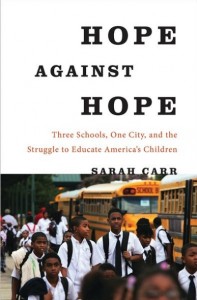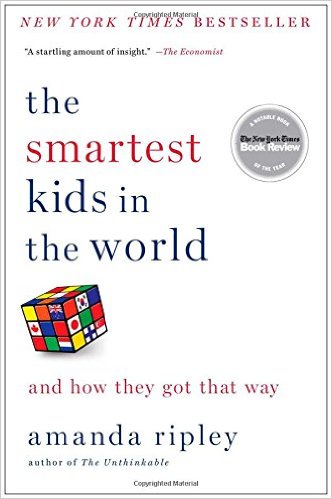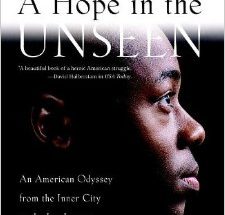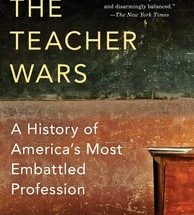
Q & A with Author Sarah Carr, Feb. 19, 2013
Author Sarah Carr was kind enough to answer some of Lucas Hammill’s emailed questions about her book and issues facing American educators.
How did you get access to the three charter schools? Were administrators, teachers, students, and parents wary about going on the record?
Sarah Carr: I had covered education for three years in New Orleans by the time I started reporting the book in depth. As a result, I was able to build relationships with various school administrators who were familiar with my work and trusted that I would treat them fairly. At times, I encountered individual teachers or families who were reticent about going on the record, or worried that I would include a specific quote or scene in the book. But overall, I was very impressed by the courage school staff and students showed in sharing their stories and experiences — warts and successes included — with me.
Did you consider choosing a traditional (non-charter) public school, or did you want to exclusively focus on charters?
Sarah Carr: More than 80 percent of the schools in New Orleans are charters now, so I really wanted the majority of the book to be focused on that experience. O. Perry Walker differed from the other two charter schools profiled in many ways, though. It more closely approximates a “traditional” school than the other two charters. I was also able to write some about the experience students had in traditional, non-charter schools after Katrina through the stories of some of the relatives of the main student I followed.
The “college-for-all,” almost cult-like culture that pervades Sci is also present at KIPP Renaissance. Why do you think Sci comes across as more successful in the book?
Sarah Carr: This is a complicated question. There is no simple answer. KIPP Renaissance was a first-year school and Sci was in its third year. KIPP Renaissance also tried to strike a middle-ground between structure and flexibility, and struggled with that balance. The leader of KIPP Renaissance also had difficulties being the kind of principal and school leader he wanted to be. If anything, reporting the book opened my eyes to how complicated the issue of school success and failure really is. In some cases, staff and students are able to come around together around a common vision for what a school can and should be, and in other cases (and for multiple reasons) that never happens.
Your book arrives at a time when the issue of guns in schools is at an all-time high. After your experience in a high-crime city like New Orleans, what do you think schools can do to become safer?
Sarah Carr: First, I think it’s important to stress that most of the gun violence in cities like New Orleans does not occur inside schools. Mass school shootings like the Sandy Hook tragedy are, fortunately, rare, and more likely to happen outside cities. That said, gun violence influences what happens inside New Orleans schools in untold ways. The most important thing I think schools can do is listen and understand that many, if not most, of their students’ lives might have been touched by gun violence. One student I followed witnessed the shootings of two peers. When she tried to talk with a guidance counselor about it, the woman brushed her off. Imagine: how hard would it be to focus on school if you had just witnessed an event that shattered any sense of security and safety you had? At times, schools do need to take concrete steps to become “safer,” but I think the more overlooked issue is understanding the trauma — or threat of trauma — many of their students live with on a daily basis.
This website covers New York City schools. What are the similarities and differences between NYC and NOLA? What grade would you give the Bloomberg administration as it prepares to exit City Hall?
Sarah Carr: I think a lot of the tensions over school reform in NOLA and NYC are similar. There are similar debates about the future and purpose of charter schools, teachers’ unions, and the role of community in school reform. That said, I would advise education writers in both of these cities — and other cities — to explore these tensions and debates through the eyes of frontline educators and families, not school officials and CEOs. While education reporters have to understand the policies that shape what happens in schools, the most important thing is that they bear witness to what happens in schools. Too often we’re distracted by Bloomberg, Paul Vallas, or whomever, and miss the real story.
Bookshelf Response by Luke Hammill
As the debate over charter schools continues to percolate all across the United States, educators, politicians, and community leaders can look to New Orleans, which became America’s charter-school laboratory after a series of fortuitous events from 2003 to 2005.
First, Louisiana state lawmakers in 2003 decided that too many schools run by the perennially underperforming Orleans Parish School Board were beyond salvation. They created a state-controlled district, gradually took over failing schools, and slowly re-assigned them to charter operators.
Two years later, Hurricane Katrina hit the region.
An already-poor city was devastated, and the schools were not spared. Faced with a crisis, the state swiftly took over most of New Orleans’ schools, fired all of New Orleans’ teachers, and turned a large percentage of schools over to charter operators. Some of the old teachers were re-hired, but some were not, clearing the way for an influx of young, non-union, out-of-town teachers.
New Orleans’ public schools had been transformed in a matter of months. Some believe the state used the hurricane as an excuse to bring in charter companies and weaken the teachers’ union. But the system had been failing before the storm.
And something needed to be done in its wake.
Journalist Sarah Carr takes readers deep inside this world in her new book, Hope Against Hope: Three Schools, One City, and the Struggle to Educate America’s Children. Carr rightly avoids wonky policy arguments, choosing instead to tell a story through the eyes of three main characters: GeraldLynn Stewart, 14, a freshman at KIPP Renaissance; Aidan Kelly, 24, a Harvard and Teach for America alum starting a new job at Sci Academy; and Mary Laurie, a veteran educator and the new principal at O. Perry Walker High School. All three schools are charters.
In some scenes, Carr describes charter schools that can seem more like cults to the uninitiated reader. Students are required to snap their fingers to express approval. Strange buzzwords, chants, acronyms, and slogans are used in lieu of simple communication (SPARK = Sit up straight, Pen to paper, Answer questions with a straight elbow, Respect at all times, Keep tracking the speaker). The quest for college is pursued with a single-minded zeal.
As the goofy Aidan (a middle-class Irish Catholic from the Northeast) struggles to relate to his poor, black students, the apprehensive GeraldLynn wonders whether she really wants to go to college. Meanwhile, Laurie is wary of the city’s new focus on mounds and mounds of data, a trend she’s slow to accommodate. She is skeptical that a singular focus on data can be an adequate substitute for her intimate knowledge of each student’s home life.
Through the characters, Carr shows that neither side of the debate over charter schools has all the answers and that top-down approaches to education reform are unlikely to ever succeed. She challenges “college for all” and invokes W.E.B. Du Bois, doubting whether the imposition of white middle-class values by outsiders, however well intentioned, upon poor black children has any hope of overarching success.
For instance, Aidan tries to teach The Great Gatsby – a novel about rich, white partygoers in 1920s New York – to poor, black kids in post-Katrina New Orleans, and predictably, not all of the students are engaged. Conversely, Aidan experiences more success when he encourages his Advanced Placement students to think about The Communist Manifesto in terms of their own lives.
Hope Against Hope would have benefited if at least one of the subjects attended a traditional, non-charter high school, as it would have provided contrast. Nevertheless, Carr shows through her reporting that education reform is fruitless when unaccompanied by changes to poverty policy, health care, and other social services. She also illustrates how educators do better when they create environments that reflect the cultures and histories of the students they serve.



